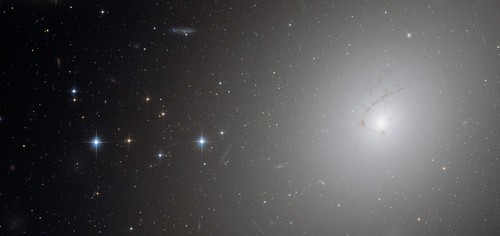Awesomeness Round-up – 8/16/10
- By Sara Mitchell
- August 16, 2010
- Comments Off on Awesomeness Round-up – 8/16/10
Last week, the Fermi Gamma-ray Space Telescope team announced that they had spotted something that had never been seen before – gamma rays coming from a nova. Back in March, Japanese amateur astronomers saw a dramatic change in a star in Cygnus and informed the professional astronomy community. Swift took a look, then Fermi, and they figured out the reason for the sudden increase in brightness: V407 Cyg, the white dwarf in a binary star system, erupted in an enormous thermonuclear explosion. It took a few months to examine the data and confirm their results, but now scientists are ready to share their discovery. Check out the animation above!
On August 7th, SOHO captured this breathtaking full halo coronal mass ejection (CME) from the Sun. The Sun is keeping astronomers busy these days with some amazing activity – and fortunately, this event shouldn’t have much of an impact here on Earth.
Meet NGC 4911, a wispy spiral galaxy living near the center of the Coma Cluster. Like many of its neighbors, this galaxy is feeling the gravitational effects of living in one of the densest collections of galaxies in the nearby Universe. Material is being stripped from the galaxy by its companion, NGC 4911A, and Hubble has captured these details in the above image combining data from 2006-2009.
And finally, check out this Hubble image of NGC 4696, the largest galaxy in the Centaurus Cluster. What are you looking at? This is a dust lane roughly 30,000 lightyears across, and it creates a strange marbling effect when the galaxy is viewed at certain wavelengths. Now zoom into NGC 4696 for a little perspective on that shot:




